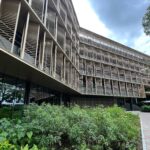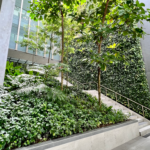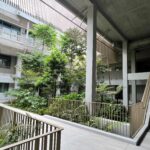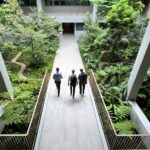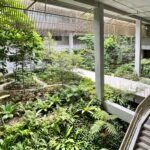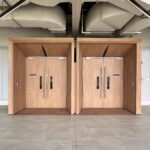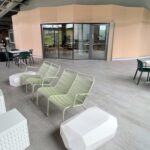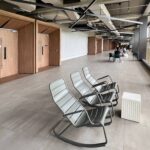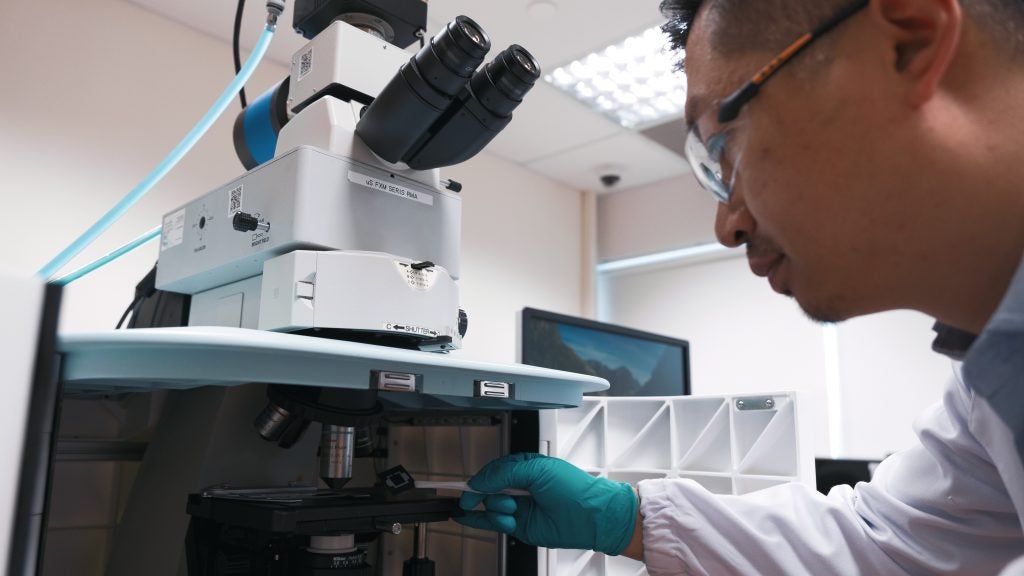
NUS and CDE have unveiled two new initiatives to advance the University's sustainability goals and boost Singapore's capabilities for sustainability leadership.
On February 2 a ceremony was held to formally launch two buildings on the CDE campus - SDE1 and SDE3 - that have been redesigned and retrofitted with modern, low-energy green architectural elements. Together with the neighbouring SDE4 building, they form NUS' first building cluster targeting net-zero.
The event also saw the launch of NUS Cities, a new interdisciplinary centre based within CDE that aims to develop innovative solutions for sustainable, resilient and liveable cities by drawing upon expertise from across NUS to offer university-wide education and research programmes.
Both initiatives were launched by Mr Heng Swee Keat, Deputy Prime Minister and Coordinating Minister for Economic Policies.

In his address, Mr Heng praised the interdisciplinary effort behind the SDE1 and SDE3 project - bringing together architects, engineers, and designers - noting that what NUS has done with the adaptive reuse of the buildings has great potential to be applied in Singapore and beyond.
"SDE1 and SDE3 offer lessons on how such rejuvenation can be done to meet new needs while improving carbon performance," he said.
"This is a highly commendable effort that the built environment sector can learn from."
Photo gallery: SDE1 and SDE3 rejuvenated
Speaking at the launch event, NUS President Professor Tan Eng Chye said the two initiatives reaffirmed "NUS' deep commitment to shaping the future of sustainability and climate action in an impactful way".
SDE1 and SDE3 were the University's "first adaptive reuse projects on campus designed to achieve a net-zero energy target", he said, whilst NUS Cities was "a strategic initiative to harness our diverse expertise and strong partnerships for the University to play a key role in urban systems education and research."
"I am confident that NUS' vibrant community of innovative researchers, dedicated staff and enthusiastic students can make significant contributions towards Singapore's long-term net zero emissions aspiration," Prof Tan said.
Professor Aaron Thean, Dean of CDE, said the rejuvenation of SDE1 and SDE3 would "increase awareness of technology, design, environment and sustainability in our students and graduates."
He added: "This project also represents the next benchmark for renovation and sustainability for the built environment in the future. In addition, we are proud to host NUS Cities, which will adopt a multidisciplinary, inclusive and collaborative approach to tackling complex urban challenges."
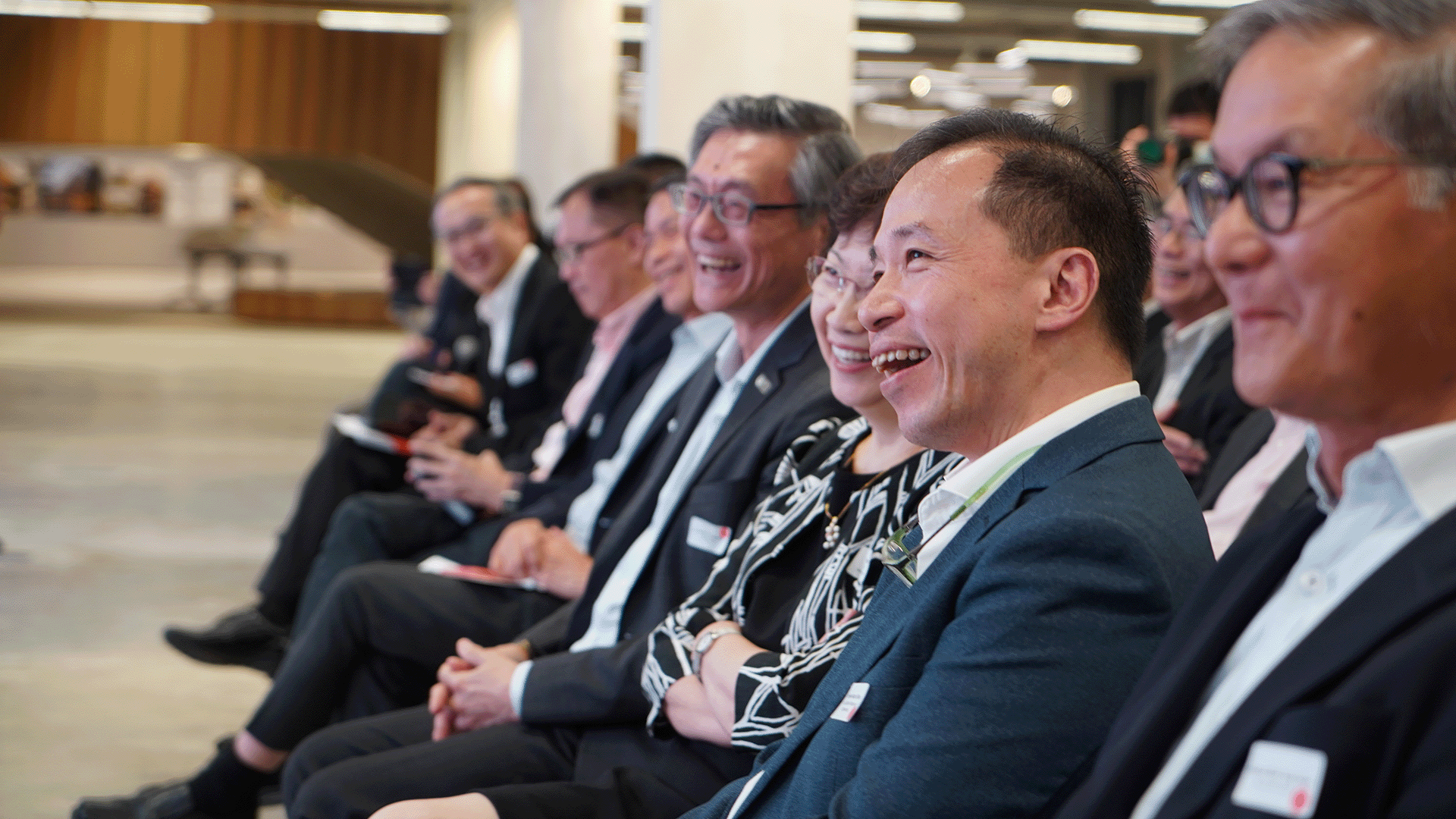
About SDE1 and SDE3
One aspect of NUS' sustainability strategy involves using its campus grounds as a living laboratory to test-bed institution-led technologies and create innovative learning experiences for students.
Built in the 1970s, SDE1 and SDE3 are among the oldest buildings on the NUS Kent Ridge Campus. The concept for retrofitting the buildings resulted from an academia-industry collaboration between CDE and CPG Consultants to transform the buildings' usable space, creating inspiring architectural quality and incorporating innovative building features for improved energy efficiency and comfort in a tropical climate.
Despite their age, as the buildings remained in good structural condition, the costs of renovation were substantially lower than demolishing them and constructing anew. Furthermore, the building's embodied carbon footprint was estimated to be less than a third of a similar new construction whilst their future total energy consumption is projected to be one-third of pre-renovation levels, directly reducing future carbon emissions.
The two renovated buildings have a combined gross floor area of around 24,000 square metres and are equipped with studios, workshops, research centres, offices, learning spaces, as well as public and social spaces.
SDE1 and SDE3 are located adjacent to SDE4, Singapore's first purpose-built net-zero energy building which opened in 2019 and has won multiple awards for its innovative design.
To read more about the unique features of SDE1 and SDE3 and their integration into NUS' first net-zero building cluster click here.

About NUS Cities
Based within CDE, the new NUS Cities centre aims to develop holistic and innovative solutions that improve the governance, planning and management of high-density, high-growth, sustainable, resilient and liveable cities.
Helmed by Professor Khoo Teng Chye as its Founding Director, the interdisciplinary and multifunctional centre will draw upon the wealth of expertise across NUS to offer education programmes, pursue research and deliver advisory services in cities and urban solutions.
The centre will bring together innovative researchers and seasoned practitioners from diverse fields such as engineering, physics, public policy, architecture and medicine.
For more about NUS Cities' activities under the three pillars of Education, Research and Advisory Services, click here.
In conjunction with the launch of NUS Cities, the centre hosted an inaugural lecture by Professor Alexander Zehnder, who is a member of the NUS Cities Panel of Advisors and a world-renowned environmental expert.
In the lecture, Prof Zehnder detailed the idea of The 2000-Watt Society - that through careful design and restricting usage to 2000 watts per person per year, global resource management could be ensured, with equal distribution leading to social equity. He explored case studies, including several cities in Switzerland where the idea is being used as a parameter for sustainable urban design.
Through adaptive reuse in SDE1, SDE3 and other buildings on campus, Professor Zehnder said he hoped that NUS could lead Singapore by example to ensure the built fabric is optimised in terms of carbon accountability and a willingness to experiment and innovate.
He said that by using the campus as a living laboratory, NUS could help Singapore achieve meaningful goals through planning and education.
Carbon Symposium
Ahead of the launch event, some 200 academics, researchers, industry personnel and policymakers from Singapore attended the Carbon Symposium for the Built Environment organised by CDE to reflect and explore research, design, and technology solutions to tackle the challenges of carbon neutrality.
A book entitled Renovating Carbon, published by CDE, was also launched at the symposium.
Based on the architectural work that went into the renovation of SDE1 and SDE3, the book examines the importance of adaptive reuse for low or zero-carbon developments.








